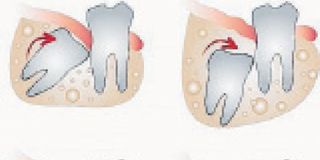Gain wisdom about your last teeth

What you need to know:
Wait a minute! Does that mean I am not wise?
They say, with age comes wisdom!
Wait a minute! Does that mean I am not wise?
My third molar (popularly known as the “wisdom tooth”) is far from erupting into my oral cavity.
So why call it a wisdom tooth? How has this tooth, which is quite similar in structure and shape to the other two molars, received so much attention and a special name too?
Well, this tooth gets its name from the fact that it appears at a later stage in the life of an individual (between 17-21 years of age) when we believe that we are much wiser than we are as a child.
90 per cent of 20 year olds have at least one wisdom tooth that hasn’t erupted or has erupted partially.
The reason it steals the limelight from the other two molars is because with environmental evolution (that is a change in diet from a plant based, foliage rich diet during our ancestral time to a much softer human diet comprising of carbohydrates and high energy foods), the jaws of humans grows less in terms of forward growth.
This is due to lack of use and as a result having inadequate room for the wisdom teeth. This leads to the tooth erupting partially or becoming entrapped in the bone and causing discomfort and this is what is widely known as an impaction / impacted tooth.
Partial eruption of the wisdom teeth becomes a source of infection as it creates a pocket that lodges food particles and bacteria, compromising brushing and flossing which in turn results in pain, swelling and jaw stiffness in some cases.
This is due to their hard-to-reach location and awkward positioning, making them prone to tooth decay and gum disease.
Functionally, the third molar has no crucial role to play in the mouth and thus in most cases; it is extracted by a dentist as soon as there is any sign of it causing discomfort to a person or harm to the adjacent tooth.
Impaction is broadly categorised into three groups
Vertical
Horizontal
Angular
Partial Eruption
So what should one do when this so called wisdom tooth, starts giving you unneeded trouble?
Wisdom teeth pain is not something to ignore. Dental expert Dr. Jay W. Friedman, estimated in a research paper in 2007 that over 11000 people suffer permanent paresthesia (permanent paresthesia is a risk of wisdom tooth removal. It causes numbness and in some cases an uncomfortable “pins and needles” like sensation in the mouth) following the extraction of wisdom teeth.
First and foremost, go visit your dentist!
The dentist will evaluate the situation and as a rule ask for an orthopantomogram (OPG). This is a full mouth X-ray, which images both the jaws and all set of teeth.
This will help to determine the exact position of the wisdom tooth, which in turn will help to plan removal of the tooth successfully with minimal to no complications.
Thanks to sedation, the extraction procedure usually doesn’t hurt. It is done under local anaesthesia. Remember, general anaesthesia is given in cases where all 4 wisdom teeth need to be removed at once or if the individual is mentally challenged and may pose difficulty in complying to the dentist’s instructions.
The practice of routine wisdom tooth extraction began in the 1950’s. By the 1990’s over 70,000 people were having their wisdom teeth removed in hospital.
A small incision may be made on the gum to allow easy accessibility of the tooth and in such cases may be followed up by suturing.
Post extraction instructions are given to the patient, which includes maintaining a soft diet for a couple of days, cold compresses on the cheek from the outside and a cover of antibiotics and analgesics.
On that note, here’s hoping that the loss of your wisdom teeth won’t have an impact on your intelligence.
The author is a dentist based at the Ebrahim Haji Charitable Health Centre.




